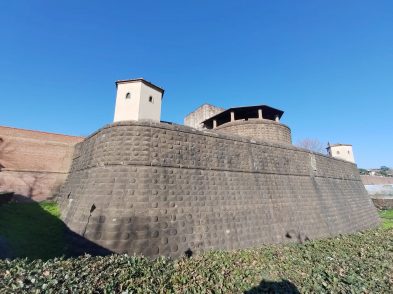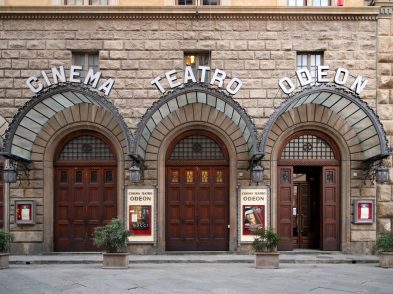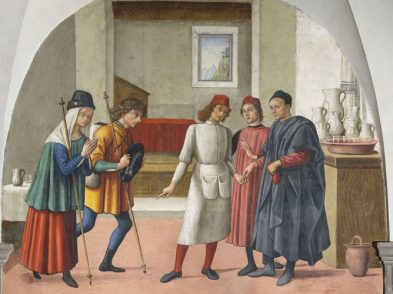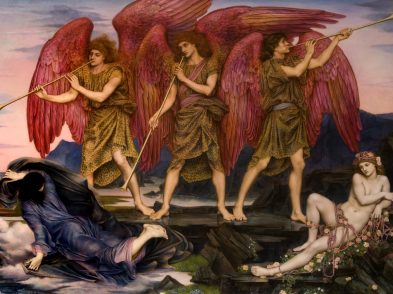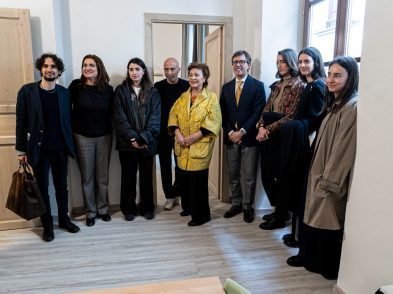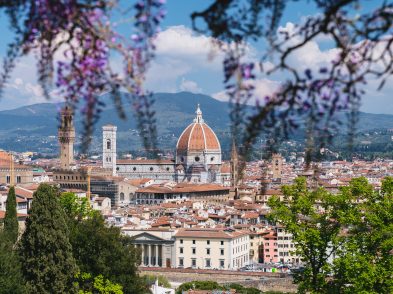After ten troubled years, the magnificent—although at the time controversial—cast iron and glass construction of the Vittorio Emanuele II gallery, which linked the city’s cathedral to the Scala theatre in Milan, was finally finished on the penultimate day of December 1877. It was to be inaugurated the next day, but the man who designed it, the 48-year-old engineer Giuseppe Mengoni, would not be there. He had fallen to his death the day before from the highest point of the scaffolding whilst making a final inspection of his unique and pharaonic architectural masterpiece. Mystery surrounds the demise of a man who aspired “to surpass all living artists and to reign in posterity alongside Raffaello and Michelangelo”. Many refused to believe it was an accident and thought he may have committed suicide driven by continuing criticism of the structure, or because delays in its completion meant that Mengoni would have had to pay a heavy monetary fine, or even due to disappointment that the king would not be there to unveil it. The public did not know that the monarch was seriously ill and would die 10 days later. No matter what the reason, Mengoni left behind an invaluable legacy of buildings in cities like Bologna, Magione (Umbria) and Florence as well as unrealised innovative projects for Rome.
In Florence, Giuseppe Mengoni left his mark on the city as part of its redevelopment during the time when the city was capital of the recently united Kingdom of Italy, between 1865 and 1871. In order to modernize and aggrandize Florence to make it more representative as a capital, one of the many priorities of the man responsible for this urban overhaul, Florentine architect Giuseppe Poggi, was to transfer and demolish the old market and the Jewish ghetto, then situated in the area that is now piazza della Repubblica and its surroundings. Some applauded this idea as they believed the market and the ghetto were “a sink of filth and disease and a blot and a taint on the city”, whereas others, including British author Vernon Lee and the Association for the Defence of Old Florence, launched a public campaign in an attempt to save its Renaissance character.

Based on ideas that Poggi had gleaned from the Halles Centrales market in Paris and the Covent Garden and Hungerford markets in London, his idea was to create a system of covered markets with a large central one flanked by several smaller local markets. The Camaldoli quarter of San Lorenzo was chosen for the new central market with Sant’Ambrogio and San Frediano (no longer in existence) for the secondary sites. Construction of the San Lorenzo market was not popular as many densely populated, rundown buildings had to be expropriated and demolished, whereas this problem did not arise with the other two markets where the selected locations were mainly covered with vineyards or vegetable and flower gardens.
In fact, the covered market of Sant’Ambrogio occupied the “Ortone”, the herb garden that once belonged to the nuns of the Santa Verdiana convent. In its place, in the middle of the newly created piazza Ghiberti, a cast iron and glass construction was erected, modelled on the new San Lorenzo market but smaller in scale and less monumental. Giuseppe Mengoni was contracted to design all three new markets. Inaugurated in 1873 (a year before the central market, which was unveiled together with an International Exhibition of Agriculture, and two years before the covered market in piazza dei Nerli in San Frediano), the Sant’Ambrogio building is notable for its functionality. The three-metre-high outside walls are in brick and are divided by grey cast iron columns supporting the upper part of the building, which is closed in by grill-type green iron panels to permit the circulation of air inside. The pavilion’s roof is also in cast iron and has the same grill formation for ventilation. The Neapolitan company Guppy e C., which constructed the building, imported the trellis beams from Belgium. The lower cornice is decorated with Florentine fleurs-de-lis, while ornate grey cast iron gates close the multiple entrances to the market corridors.
In 1955, because the surface area of the Sant’Ambrogio market could not be enlarged, the wholesale part for foodstuffs was moved to a new market in Novoli, then on the outskirts of town but conveniently close to the highway and airport. In 1984, work to consolidate the cast iron columns and metal structures, which were in need of repair, was carried out, followed by other work on the roof in 2011. The building was also painted and the lighting updated. More recently, on June 6, 2018, the City of Florence allocated 250,000 euro to improve access to the main piazza of the San Lorenzo market, including the loading bay, and to eliminate problems entering the central corridor of the Sant’Ambrogio market.
Over the years, outdoor stalls were added on three sides of the Sant’Ambrogio market protected by open-air metal canopies as well as a small covered car park to the rear. Everything from fruit and vegetables, spices, gastronomic specialities, flowers and plants, new and vintage clothes, leather goods, perfumes and costume jewellery can be found there, whereas inside the covered market, meat, poultry, fish, cheese, bread stalls, a small supermarket selling multicoloured grains and dried legumes from sacks as well as other delicacies abound. Customers can also enjoy food and drink at Rocco’s historic Tuscan trattoria (there since 1987), the tripe seller, the bar and, since October 2017, at the “risto-macelleria”, the 19-seat terrace-restaurant over the Menoni butcher’s stall, which enjoys the only view of the closed market from above. Although busy every day of the week except Sunday, there is a real buzz on Saturday mornings when the market becomes the heart of the Santa Croce “village” for locals and visitors alike.
The Giuseppe Mengoni archive museum is an architectural museum in the historic centre of Fontanelice in the metropolitan area of Bologna, where Mengoni was born in 1829. For further information, see www.comune.fontanelice.bo.it/come-fare-per/museo-mengoni.


